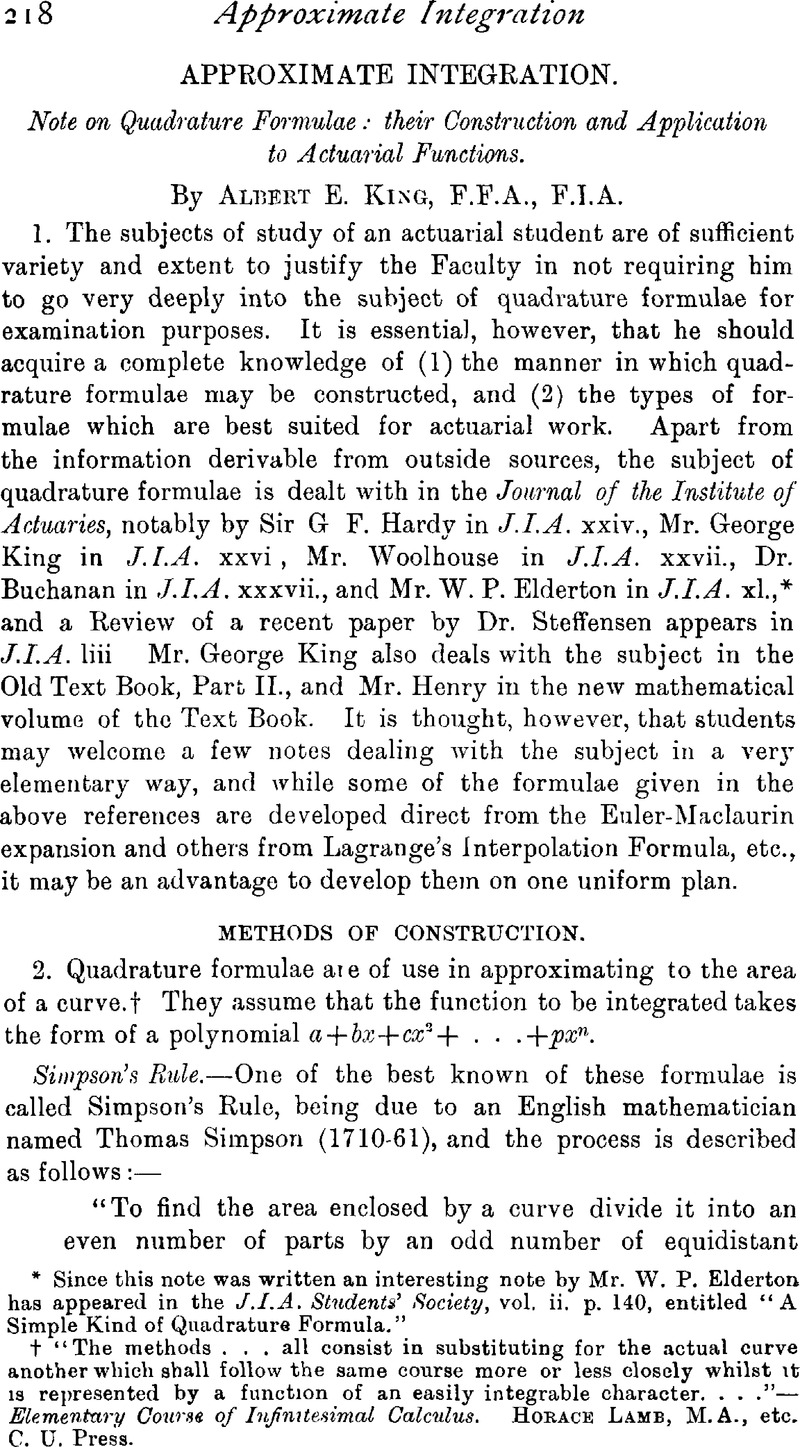No CrossRef data available.
Article contents
Approximate Integration: Note on Quadrature Formulae: their Construction and Application to Actuarial Functions
Published online by Cambridge University Press: 07 November 2014
Abstract

- Type
- Other
- Information
- Copyright
- Copyright © Institute and Faculty of Actuaries 1925
References
page 218 note * Since this note was written an interesting note by MrElderton, W. P. has appeared in the J.I.A. Students' Society, vol. ii. p. 140Google Scholar, entitled “A Simple Kind of Quadrature Formula.”
page 218 note † “The methods … all consist in substituting for the actual curve another which shall follow the same course more or less closely whilst it is represented by a function of an easily integrable character….”—Elementary Course of Infinitesimal Calculus. HORACE LAMB, M. A., etc. C. U. Press
page 219 note * The symbol = signifies “approximately equal to.” See J.I.A. xli. 134.
page 224 note * Given by W. P. Elderton, J.I.A. xl. 117.
page 224 note † It sometimes helps a student in memorising the construction of this formula to remember that the result is required to be expressed in terms of mid-ordinates, and of the difference between the 1st differential coefficients of the extreme terms.
page 226 note * The last ordinate is frequently of value zero, but it has been included in this tabulation.
page 227 note * The tying of a parcel can be taken as an analogy. It is well to secure both ends, and to “girth” the parcel with bands equal distances apart. This procedure lessens the chance of bursting and bulging—and the more bands the safer the contents.
page 228 note * A proof of the mathematical identity of “Woolhouse's” expansion with formula No 31 and Simpson's formula, assuming third differences, is given in Appendix II.




